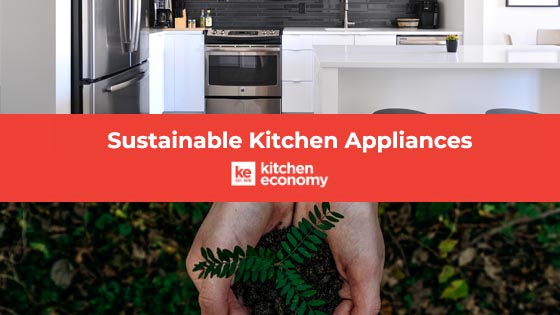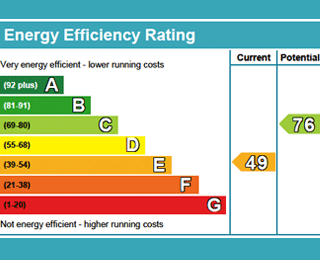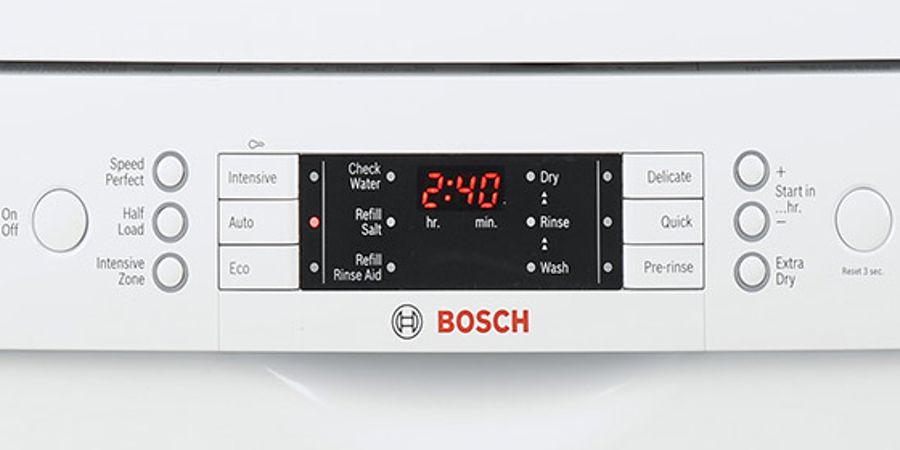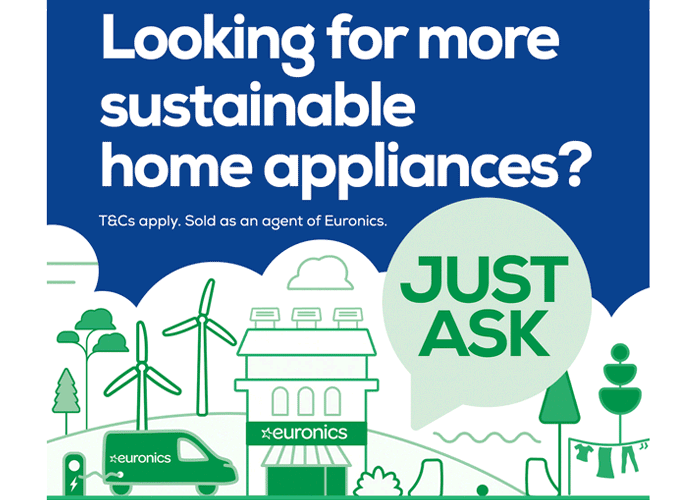
With energy prices going up and climate change providing an uncertain present and future, it might be time to contemplate being more sustainable.
A sustainable home is a fantastic place to start if you want a more ecologically friendly household. Especially with your kitchen full of machines that use energy and/or water, such as washing machines, dishwashers, tumble dryers and more. We will share with you the key features to look for when purchasing appliances for a more planet-friendly and cost-saving option.

ENERGY LABELS


If you're thinking about purchasing an appliance, the energy label is the first thing to look out for. As of 1st March 2021, the energy label rating system has changed, and you can read more about them here.
The rating ranges from A (the most efficient/least energy used) to G(the least efficient/most energy used). So make sure to look out for these labels when shopping for white goods.
Though more energy-efficient models are more expensive, they are better for the environment, have plenty more convenient features, and will save you costs in the long run.

WASHING MACHINES
For washing machines, other than the energy label, you should look for how much water they use. A new efficient washing machine model may use up to 40% less energy than a standard model. You can check out our most energy-efficient washing machines here.
Additionally, appliances have evolved over the years and are now packed with many sustainable features. Check out below some of our favourite features from different brands.
Siemens waterPerfect Plus
The Siemens extraKlasse iQ500 WM14UT93GB uses a clever water sensor system to recognise the fabric type and precise load size. It automatically and accurately delivers the correct amount of water-based on these two inputs. This guarantees that you always get an excellent wash outcome while using the least amount of water and energy.
Bosch i-DOS
On the other hand, the Bosch Serie 6 i-DOS WAU28PH9GB is fitted with Intelligent dosing technology that selects the proper setting, amount of detergent, and water for excellent laundry wash after wash whilst saving on detergent and on your utility bills. Simply fill the big built-in detergent and conditioner containers and let i-DOS handle the rest.

FRIDGE FREEZERS
With fridge freezers constantly running, they can use a lot of energy, so it is essential that you check the energy efficiency when buying a new one. A good rule of thumb is to check if your appliance is ten years old or more, if so you should purchase a new one, as you could save a lot of energy and money.
Furthermore, some fridge freezers are also fitted with the latest food storage technology that will minimise food waste to help save costs on your groceries. Here are our choices;
Beko HarvestFresh™
.gif)
Video by Beko
HarvestFresh is a revolutionary crisper drawer technology developed by Beko. Three-color light technology beautifully mimics the 24-hour cycle of the sun so that your food items last fresher for longer, so you can minimise food waste and decrease the cost of your energy bills.
Fast Freeze & Fast Chill Functions
When purchasing a new fridge freezer, look for Fast Freeze and Fast Chill features. Depending on the brand, they might be called something slightly different but essentially provide the same features.
Fast Freeze
When initiated a few hours before use, the rapid freezing feature lowers the compartment's temperature, which is useful when you need to swiftly freeze particular goods to retain their freshness and nutritional content.
Fast Chill
A quick-chill button boosts chilling power to swiftly chill fresh food to safe degrees, keeping it fresher for longer and nutrients contained within. Ideal when you put a lot of fresh food into your fridge at once after a big grocery run.

DISHWASHERS
Dishwashers use a lot of water and power, so this is one appliance that must be energy-efficient. As a regular-use appliance, you should choose one that uses less electricity and water while still doing a good job.
Though dishwashers with sustainable features can be more expensive, it is important to consider the long term savings that can be made and your decreased impact on the environment. See our favourite sustainable dishwasher features below:
Bosch Zeolith PerfectDry
The revolutionary Zeolith drying technology converts the dampness of the cleaning phase into hot air, allowing all of the dishes to be optimally dried. As a consequence, The PerfectDry consumes 20% less energy than standard dishwashers.
Eco Programme

Image by Bosch
Another critical feature to look for when purchasing a dishwasher is Eco mode. This program on the dishwasher helps lower the wash and rinse temperature during the cycle, in turn using less energy. The only downside is that this mode will take longer than the standard cycle.

INDUCTION HOBS
Induction hobs are significantly more efficient than other hobs since they utilise all the heat generated. Furthermore, induction hobs cook at a higher rate and save substantial energy over time.
Though Induction hobs are more expensive and may require investing in new pots and pans, you'll be able to benefit in the long term from cost savings and be able to cook with more efficiency. You can read more about how induction hobs work here.
JUST ASK CAMPAIGN

If you want to know more information or seeking other sustainable appliances, you can visit us at our Cardiff showroom and ask about the best sustainable models that will suit you. You can also check out the Just Ask Campaign on our website here, courtesy of Euronics.